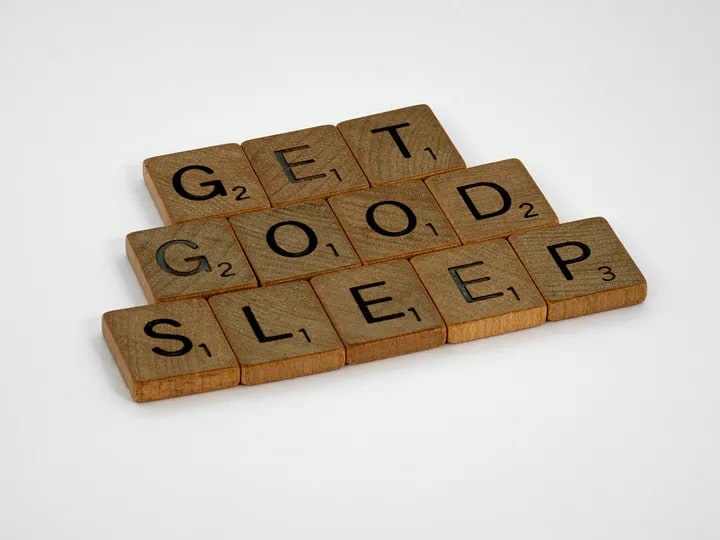Cognitive Behavioral Therapy for Insomnia (CBT-I)
A Guide to restful Sleep

Quality sleep isn’t a luxury but a necessity, essential for our cognitive function, emotional stability, and physical health. Yet, for many of us, securing the rest we need is a nightly struggle. The consequences are critical as insufficient sleep is linked to cardiovascular disease, diabetes, depression, and cognitive decline. However, hope is never lost.
Recent advancements in sleep research have elucidated powerful strategies to enhance sleep quality. This article dives into one of the most promising findings: Cognitive Behavioral Therapy for Insomnia (CBT-I). Here, we will discuss how this approach can transform our nights from restless to restful and significantly improve the overall health and quality of life.
The Essence of CBT-I
Insomnia can be a relentless foe, robbing us of our health and peace of mind. CBT-I is a beacon of hope, providing a structured approach to addressing the mental and behavioral patterns that hinder our ability to sleep. However, like most management techniques for mental health issues, it is not an overnight process but is rather an ongoing endeavor.
In essence, CBT-I is not just a treatment; it’s a lifestyle improving mechanism for understanding and reshaping the thoughts and behaviors that perpetuate insomnia. Unlike medications that often offer temporary relief, CBT-I aims to tackle the root causes of sleep disturbances, promising long-term improvements. The technique is recognized by the American Academy of Sleep Medicine (AASM) as the gold standard for treating chronic insomnia. CBT-I is grounded in the belief that insomnia is maintained by cognitive and behavioral factors that can be modified.
Core Principles of CBT-I
At its heart, CBT-I is based on the premise that insomnia is fueled by negative sleep habits, maladaptive beliefs about sleep, and emotional responses to sleeplessness. By identifying and altering these factors, CBT-I helps break the cycle of insomnia, promoting healthier sleep patterns.

Techniques of CBT-I
Sleep Restriction Therapy (SRT): SRT is designed to consolidate sleep and boost sleep efficiency by limiting your time in bed to the actual amount of sleep you achieve. Begin by calculating your average sleep duration over a week. Restrict your time in bed to this duration plus an additional 30 minutes. As your sleep efficiency improves, gradually increase your time in bed by 15–30 minutes each week. Remember to maintain a consistent wake-up time and avoid naps during the day.
Stimulus Control Therapy (SCT): SCT focuses on re-associating your bed and bedroom with sleep while minimizing activities that cause sleeplessness. Go to bed only when you feel sleepy and use the bed solely for sleep and intimacy. If you find yourself unable to sleep after 20 minutes, leave the bedroom and engage in a quiet activity until you feel sleepy again. Maintain a consistent wake-up time every morning, irrespective of how much sleep you obtained, and avoid naps during the day.
Cognitive Restructuring: Cognitive Restructuring targets the negative thoughts and beliefs about sleep that contribute to insomnia. By challenging and changing these thoughts, you can reduce the anxiety and stress associated with sleep. Use Thought Records to jot down negative sleep-related thoughts along with evidence for and against them, and develop more balanced and realistic thoughts to replace the negative ones. Practice Cognitive Reframing by substituting negative thoughts with positive affirmations and realistic expectations about sleep.
Relaxation Techniques: Relaxation techniques are essential for reducing the physiological and cognitive arousal that can interfere with sleep. Start with Progressive Muscle Relaxation by systematically tensing and relaxing each muscle group, beginning from the toes and moving up to the head. Deep Breathing involves practicing deep diaphragmatic breathing to promote relaxation. Guided Imagery helps by visualizing a peaceful and relaxing scene to calm both mind and body. Finally, Mindfulness Meditation encourages focusing on the present moment and observing thoughts and sensations without judgment.
Sleep Hygiene Education: Good sleep hygiene practices are crucial for fostering an environment conducive to restful sleep. To achieve this, maintain a consistent sleep schedule and create a comfortable sleep environment that is cool, dark, and quiet. Avoid caffeine and heavy meals before bedtime, and limit screen time to reduce blue light exposure. Engage in regular physical activity, but steer clear of vigorous exercise close to bedtime.

The CBT-I Process
CBT-I is very structured process which typically involves weekly sessions over 6–8 weeks, either individually or in a group setting. Each session focuses on different aspects of insomnia, incorporating various techniques to improve sleep.
- Initial Assessment: A comprehensive assessment of sleep patterns, habits, and contributing factors to insomnia.
- Sleep Diary: Keeping a sleep diary to track sleep patterns and behaviors throughout the treatment.
- Psychoeducation: Learning about the principles of sleep regulation and the factors contributing to insomnia.
- Behavioral Interventions: Introducing and tailoring techniques like sleep restriction and stimulus control to the individual’s needs.
- Cognitive Interventions: Identifying and challenging negative thoughts and beliefs about sleep.
- Relaxation Training: Learning and practicing various relaxation techniques.
- Review and Adjust: Reviewing progress, making adjustments to the treatment plan, and addressing ongoing sleep issues.
Self-Help Resources
CBT-I has proven to be highly effective in treating chronic insomnia, with numerous studies showing significant improvements in sleep quality, duration, and the time it takes to fall asleep. The benefits are often long-lasting, with many individuals maintaining improved sleep patterns after treatment ends.
For those who cannot access a therapist, self-help resources can guide you through the principles and techniques of CBT-I. Books like “Say Goodnight to Insomnia” by Gregg D. Jacobs and “The Insomnia Workbook” by Stephanie A. Silberman offer practical advice and exercises based on CBT-I principles. Online programs and apps like “CBT-I Coach” and “Sleepio” provide structured, interactive CBT-I treatment that you can follow at your own pace.
Also check this helpful resource out: Reviewing the Best Online CBT-I Apps

Final Thoughts
Cognitive Behavioral Therapy for Insomnia (CBT-I) is a comprehensive approach to overcoming insomnia. It’s not a modern-day buzz words, but rather a scientifically proven method that has shown promising results. Its combination of techniques like sleep restriction, stimulus control, cognitive restructuring, and relaxation training can help us achieve better sleep and improve the overall quality of life. CBT-I can provide a pathway to restful, restorative sleep through both professional guidance and self-help resources.
For further information and detailed guidance, consult resources like the American Academy of Sleep Medicine (AASM) and the Sleep Foundation.
Note: None of the resources mentioned in this article have any link to me, professional or otherwise.
About the Creator
Enjoyed the story? Support the Creator.
Subscribe for free to receive all their stories in your feed. You could also pledge your support or give them a one-off tip, letting them know you appreciate their work.





Comments
There are no comments for this story
Be the first to respond and start the conversation.